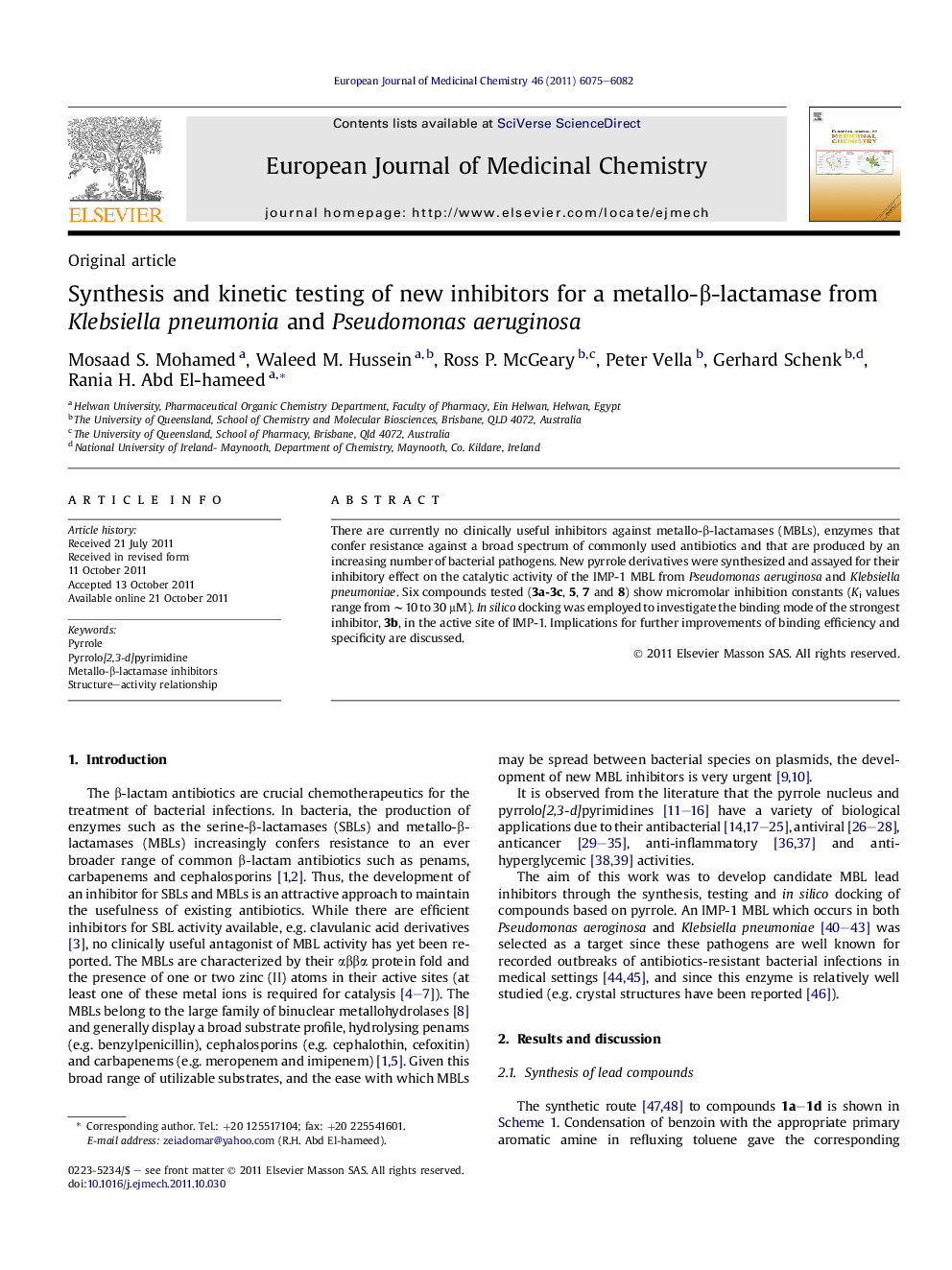| Article ID | Journal | Published Year | Pages | File Type |
|---|---|---|---|---|
| 1396065 | European Journal of Medicinal Chemistry | 2011 | 8 Pages |
There are currently no clinically useful inhibitors against metallo-β-lactamases (MBLs), enzymes that confer resistance against a broad spectrum of commonly used antibiotics and that are produced by an increasing number of bacterial pathogens. New pyrrole derivatives were synthesized and assayed for their inhibitory effect on the catalytic activity of the IMP-1 MBL from Pseudomonas aeruginosa and Klebsiella pneumoniae. Six compounds tested (3a-3c, 5, 7 and 8) show micromolar inhibition constants (Ki values range from ∼10 to 30 μM). In silico docking was employed to investigate the binding mode of the strongest inhibitor, 3b, in the active site of IMP-1. Implications for further improvements of binding efficiency and specificity are discussed.
Graphical abstractSurface view of the IMP-1 active site for the highest Autodock Vina score conformation of IMP-1 with 3b docked into the active site.Figure optionsDownload full-size imageDownload as PowerPoint slideHighlights► A new series of pyrrole derivatives was synthesized. ► Eleven pyrrole derivatives were tested as metallo-β-lactamase inhibitors. ► Six compounds showed a good inhibition effects with Ki values ranging from ∼10 to 30 μM. ► In silico docking was employed to investigate the binding mode of the strongest inhibitor.
